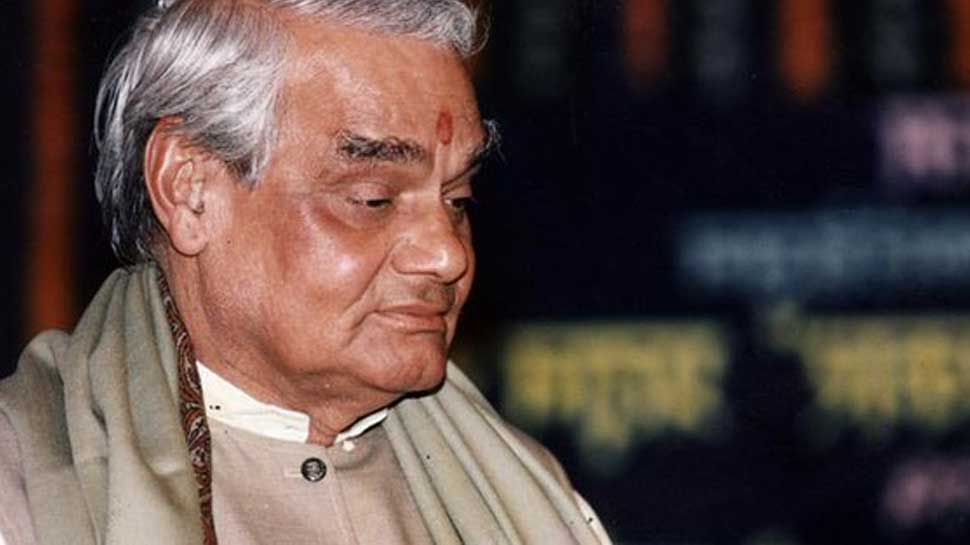RIP is not our culture, Say instead “Aatma Ko Sadgati Prapt Ho”
Former Prime Minister and one of the tallest leaders Indian politics has ever seen, Shri Atal Bihari Vajpayee, took his last breath on Thursday. A proud Hindu, fierce nationalist and a firm believer in Hindu tradition, it is distressing to see people offering their condolence to him with the saying ‘Rest in Peace’. R.I.P is not in accordance with Hindu tradition. The concept of R.I.P doesn’t exist in Hinduism. That’s why instead of using RIP we should say, “Om Shanti” or “Aatma Ko Sadgati Prapt Ho (May Soul attain Moksha)”. Sadgati means salvation or liberation. We always pray that may the soul get liberated from the cycle of life and death.
In Santana Scriptures There are four gati according to sacred texts such as
- Deva gati (Sadgati)
- Manushya Gati (Sadgati)
- Tiryanch Gati
- Narak Gati
There are four types of gati but only are considered as Sadgati with means the good gati where soul can find the purpose of life and walk on path of ultimate salvation. The only way to attain Sadgati is that a person should always do good deeds, donate etc., have a spirit of philanthropy, do not harm anyone with his mind, words and body. While meditating on God, while reducing your sins, keep busy in virtuous works. That is to say, Sadgati can be achieved only by doing good deeds.
R.I.P means Rest in Peace — this is a Judeo-Christian blessing, RIP is engraved on the gravestones of Christians. In Christianity, this short epitaph signifies wishing eternal rest and peace to someone who has died. Christians bury the dead ones and the soul rests in peace in that grave for eternity until the judgment day arrives. On the Judgment day, the Lord will decide who goes where- Heaven or Hell. They believe that on the Judgment day the dead will rise again. Until that time, the soul has to suffer and suffocate inside that coffin.
Meaning Of Sadgati
Now, here begins the problem. Hinduism does not have any concept such as that of rising of dead ones we have only concept of Sadgati. Hinduism believes in reincarnation. It says that the cycle of birth and death are governed by the Karma of individuals. The deceased individual would take another birth based upon the Karma of his previous life. His/her soul starts searching for another body.
So there is no rest and hence, the concept of RIP is not valid in Hinduism. Hinduism believes in Moksha that is liberation- Liberation from the endless cycles of birth and death. That’s why instead of using RIP we should say, “Om Shanti” or “Aatma Ko Sadgati Prapt Ho (May Soul attain Moksha)”. Sadgati means salvation or liberation. We always pray that may the soul get liberated from the cycle of life and death. May the soul attain the good gati such as Manushya or Deva so he can walk on the path or Moksha.
Understand the Concept of RIP
In fact, the concept of RIP would remotely come close to the concept of Preta (Evil, hungry ghosts) which is basically a curse in the Hindu way of life. An individual after leaving his/her body becomes Preta. When the soul gets locked into a standstill in Earth’s atmosphere it becomes Preta for eternity. It turns evil. It starts creating problems for others; creating the problems for other becomes its only purpose. Preta Aatma (soul) tries to pursue its near and dear ones to leave their living bodies and join him/her as Preta Aatma.
Its sole focus is always on to increase community of Preta Aatma. That’s why in Hindu way of life there is a concept of Terahvin (13 days). For 13 days family members of deceased persuade the Pretas every day with various invocations and offerings requesting them to leave this earth and move on to their next destination which could be either incarnation or salvation (moksha). We don’t allow them to remain as Preta because it is a curse.
Having said that, let us pray that may the soul of Atal Bihari Vajpayee may attain Sadgati.
